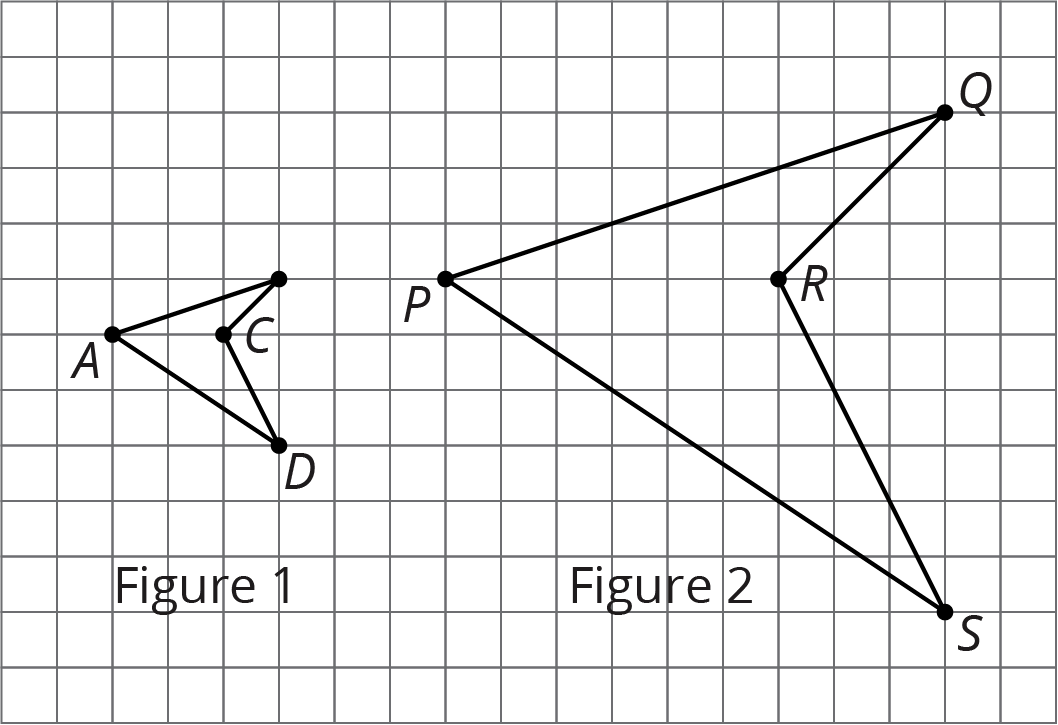Lesson 14
Alternate Interior Angles
Problem 1
Use the diagram to find the measure of each angle.
- \(m\angle ABC\)
- \(m\angle EBD\)
- \(m\angle ABE\)

Solution
For access, consult one of our IM Certified Partners.
(From Unit 1, Lesson 9.)Problem 2
Lines \(k\) and \(\ell\) are parallel, and the measure of angle \(ABC\) is 19 degrees.

- Explain why the measure of angle \(ECF\) is 19 degrees. If you get stuck, consider translating line \(\ell\) by moving \(B\) to \(C\).
- What is the measure of angle \(BCD\)? Explain.
Solution
For access, consult one of our IM Certified Partners.
Problem 3
The diagram shows three lines with some marked angle measures.

Find the missing angle measures marked with question marks.
Solution
For access, consult one of our IM Certified Partners.
Problem 4
Lines \(s\) and \(t\) are parallel. Find the value of \(x\).

Solution
For access, consult one of our IM Certified Partners.
Problem 5
The two figures are scaled copies of each other.
- What is the scale factor that takes Figure 1 to Figure 2?
- What is the scale factor that takes Figure 2 to Figure 1?

Solution
For access, consult one of our IM Certified Partners.